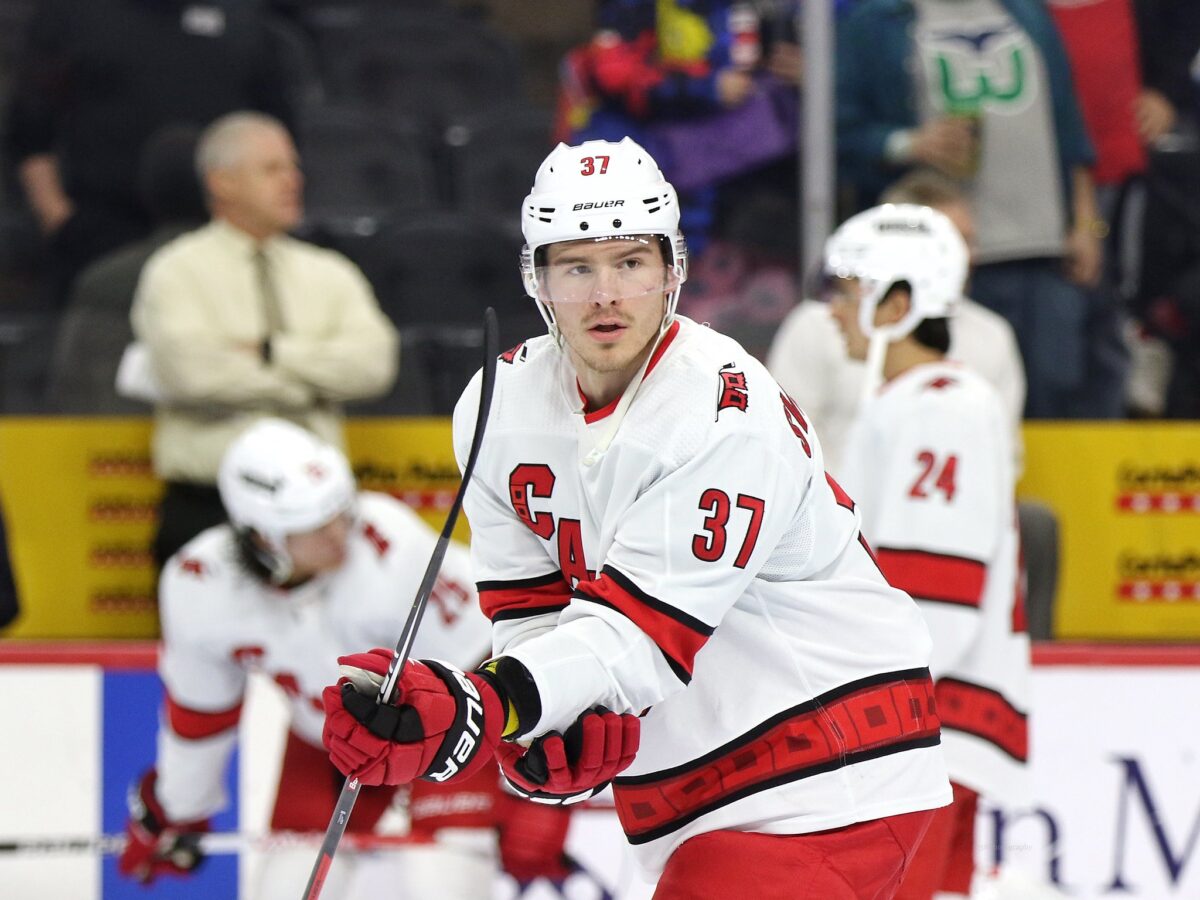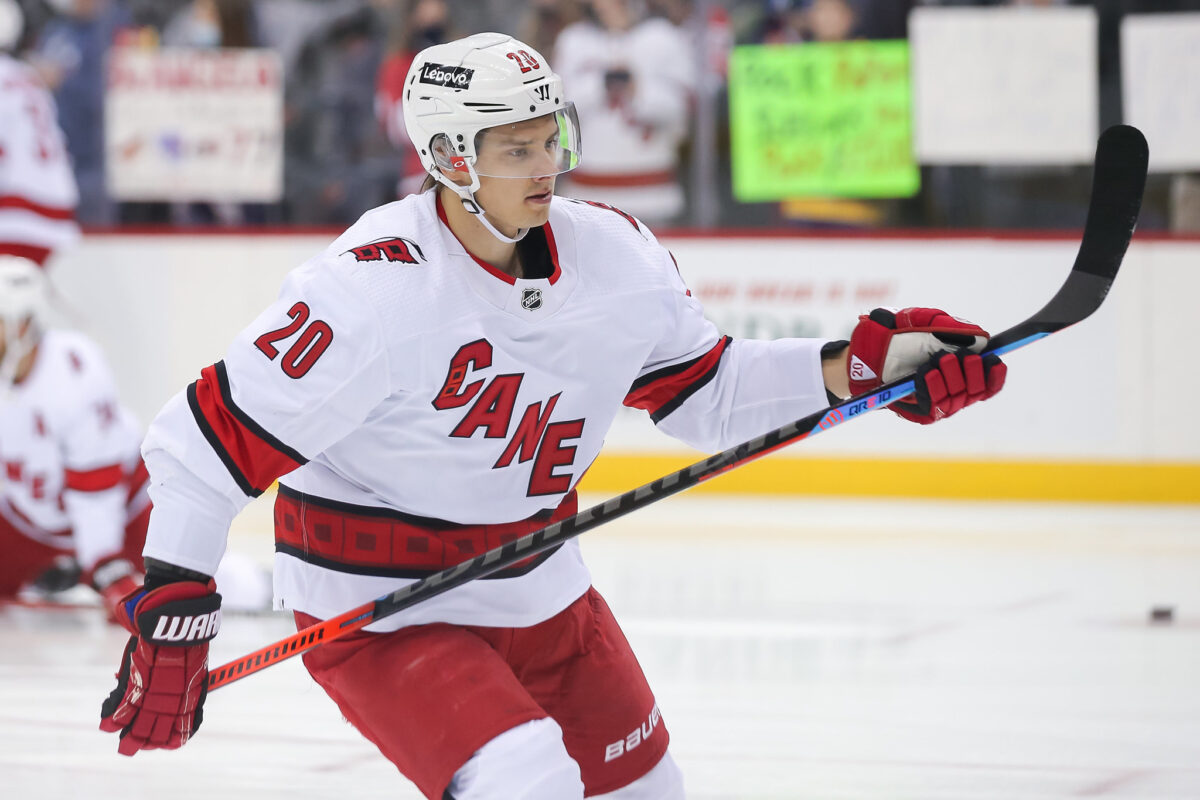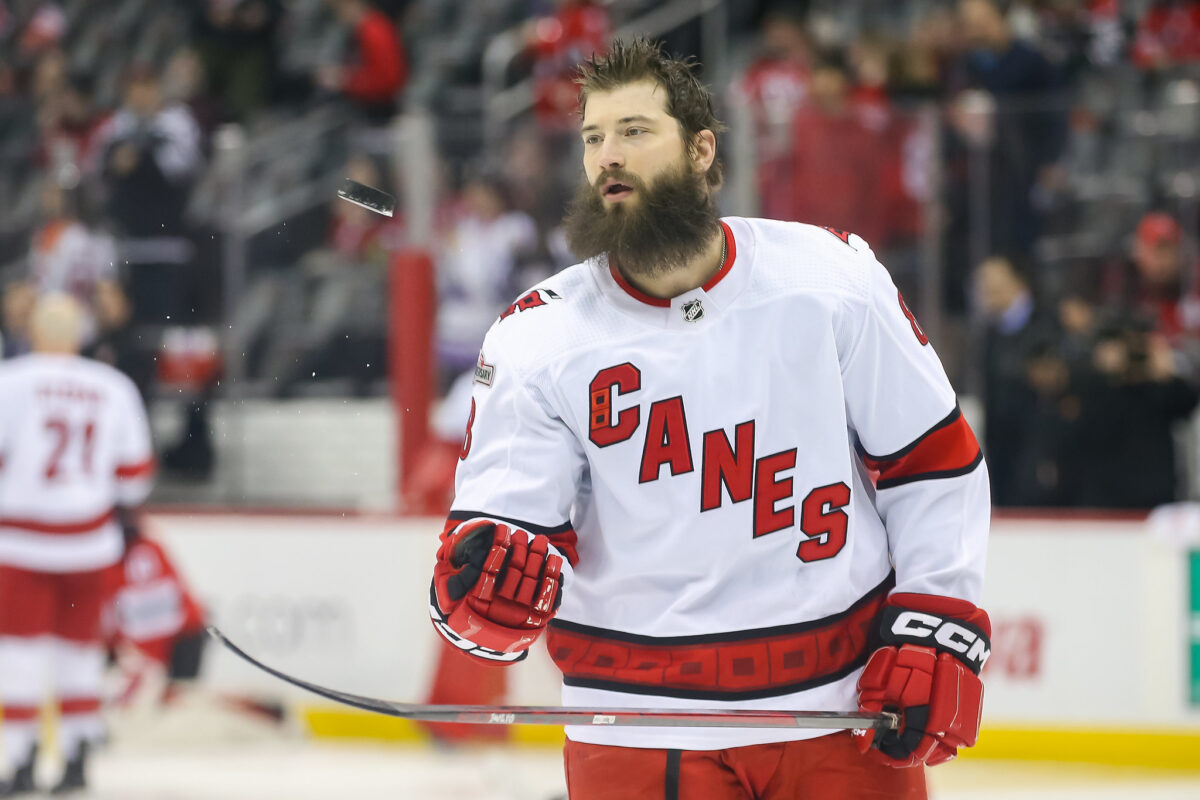Most will point to their offensive production when asked about the Carolina Hurricanes’ weaknesses. When your top point producer scores 71 points, it is usually a bad sign. There were 12 100-point producers around the NHL last season, with 22 hitting the 82-point mark for a point-per-game pace. None of them were Hurricanes. You have to go all the way down to the 58th leading point scorer in the league to find Martin Necas, who led the organization last season.

So, on the surface, this seems pretty cut and dry. Carolina will improve when they add more offensive firepower. That’s been the thinking of many people regarding the Hurricanes for many years. If Sebastian Aho or Andrei Svechnikov takes that next step, they’ll be among the best in the league and give the Canes the punch up front they are missing. Well, a quick dive into the numbers beneath the Hurricanes’ offensive drought will show you everything wrong with the offense in Raleigh.
Quality of Chances
In hockey, not all scoring chances are equal. A shot from the edge of the crease is more dangerous than a shot from the point. Logically, the less time a goaltender has to react to a shot, the more dangerous the shot is. If you can get a clean look from in close, it’ll be considered a medium or high danger chance. Low danger chances are things like shots from the point that require screens or deflections to pose any real threat to a netminder.
Related: Andrei Svechnikov is Hurricanes X-Factor in 2023-24
Carolina’s entire system stems from its blue line. Guys like Tony DeAngelo, Dougie Hamilton, and Brent Burns getting pucks through traffic is one of the most essential parts of the Rod Brind’Amour system. This works for players in the bottom six, but it suppresses some talented players like Necas, Svechnikov, and Aho. Players cannot pass the puck to move a stable defensive system into a position where they are easier to exploit.
According to Natural Stat Trick, no Hurricanes player appeared in the top 25 of high-danger chances for per 60 minutes played, or HDCF/60. The highest placing Hurricane that played at least 50 minutes was Svechnikov at 27. If you’re thinking, “Isn’t that just the fault of the players?” the next highest Hurricane was Paul Stastny at 35. There were issues with the chance creation of this team. Aho and Stefan Noesen sit at 41 and 42, and Burns slides in at 49, showing the entire Canes system. Dylan Coghlan is at 51, which is funny in its own right.
Where Does This Problem Stem From?
As I’ve mentioned, the Hurricanes’ offensive system is what creates the issues here due to its overreliance on point shots. While this had postseason success against teams that were either just inferior to the Hurricanes in the case of the New York Islanders or a team whose netminders could not stop a beach ball in the New Jersey Devils, they ran into issues when they found a competent team with a capable netminder.

To start right at the beginning, to find the root of the problem comes from the coach. Brind’amour wants each player on the roster to play a complete 200-foot game. Do not fall asleep defensively; ensure you’re not giving up anything, even if you’re not scoring. This handcuffs explosive talents like Svechnikov because he’s the kind of player you want flying the zone early. It means the Hurricanes rely more on the tried and trusted dump-and-chase strategy, which implies puck retrieval in the corners and moving it back to the point where someone lets it fly. This works for players without elite shooting talent, but its effect on some of the other players is crippling.
Will New Players Make a Difference?
Well, this is a difficult question. A player could make a difference if they could create their own chances. Somebody like Matthew Tkachuk, whom the Hurricanes wanted so badly, did this well last season and led the league in HDCF/60. Timo Meier, who the Hurricanes were pushing hard for at the trade deadline, was 11th. So, the right player could help. However, finding someone who can do what the Hurricanes need them to and maintain solid defensive stability is an issue.
Offseason recruit Michael Bunting slotted in at 34 in this statistic. While we can be hopeful that more firepower and talent on this forward core will make a difference in chance creation, it may take time for Bunting to get used to the new surroundings in Raleigh. There’s no miracle answer to this. If the Hurricanes are going to fix their offensive production problems, they are going to need more than just roster help. It will require some of the leash put on the offense to be loosened.
Changing the System
This will likely come with a new coach, as coaches tend to employ their system regardless of the fit for the roster. This should be clarified; this is not in any way suggesting Brind’Amour should be in trouble. He’s brought nothing but success to Raleigh. However, not being the most offensively gifted of players, it’s clear to see his method of trying to score is more of how he did it, and it strangles the roster. While the Hurricanes are incredibly strong in their cycle game, it does handcuff the team at times.
Related: Three Bold Sebastian Aho Predictions
To see how other teams have more freedom in their goal-scoring, all you need to do is look at how the Hurricanes find success against their opponents. If there is a player flying the zone early, there’s a Hurricane accompanying him, but Carolina is drilled to never exit the play early. It makes for a rock-solid defensive system, but it also means that those rush chances you see in other games are far less frequent.

Changing the system may not be the answer to this problem either because of how the Hurricanes produce within it. Pucks on the net at a high volume looking for tips is a great way to score in the playoffs. We saw this through the first two rounds. Carolina’s ability to score against good goaltenders was there until they ran into Sergei Bobrovsky. Even then, each game was only decided by a single goal. It shows that it works but doesn’t beat that superhuman netminder.
With a fresh season and perhaps a fresh narrative, the Hurricanes will have a chance to show us that they have addressed their scoring woes this summer. If they can show us that they have, there is no reason that this team cannot be the one lifting hockey’s Holy Grail at the end of the season. This roster has been built to win the Stanley Cup. Maybe this is the season the system delivers against a goalie playing out of his skin. Or it’ll be another year where the offense dries up in the postseason.
